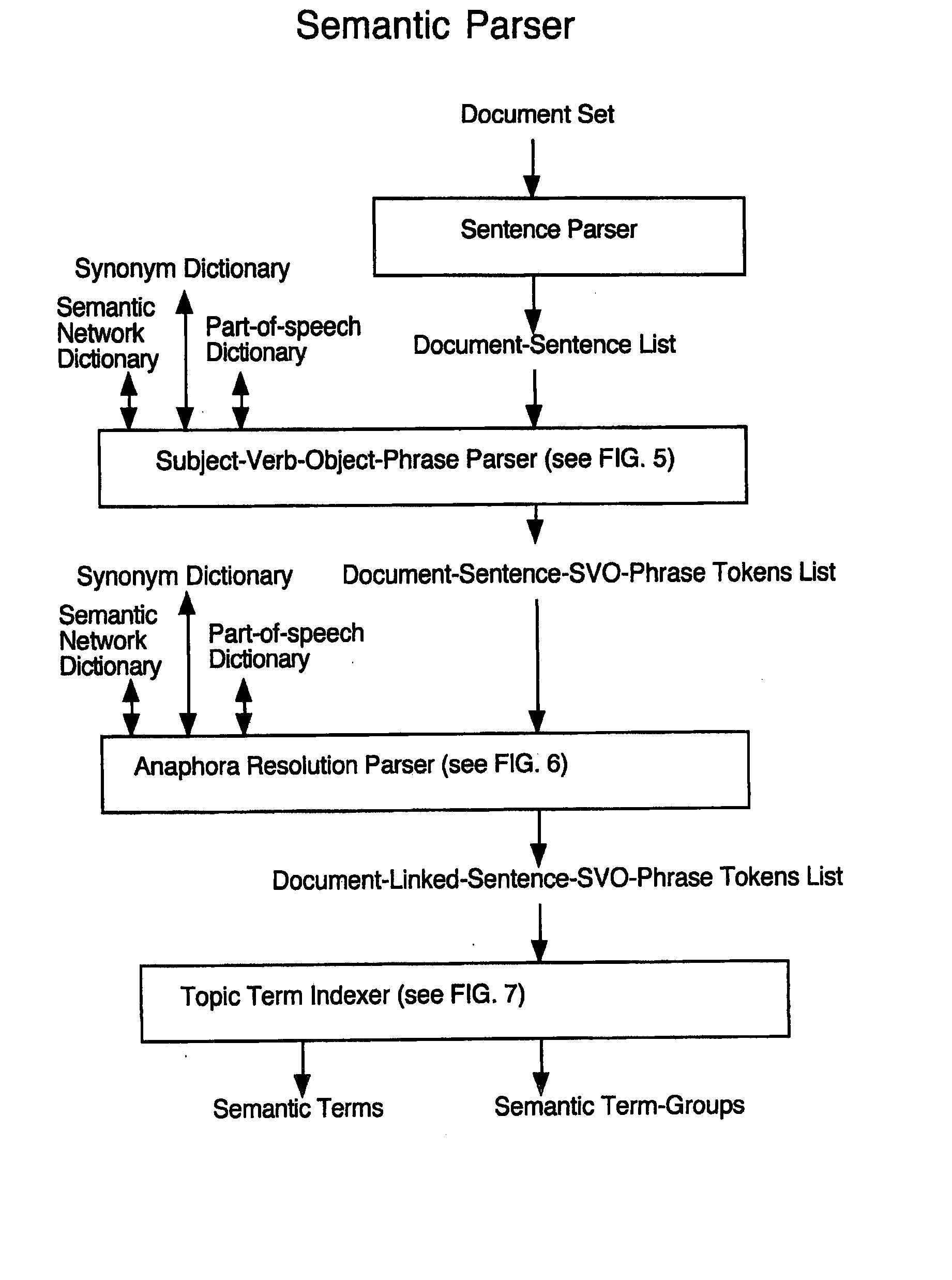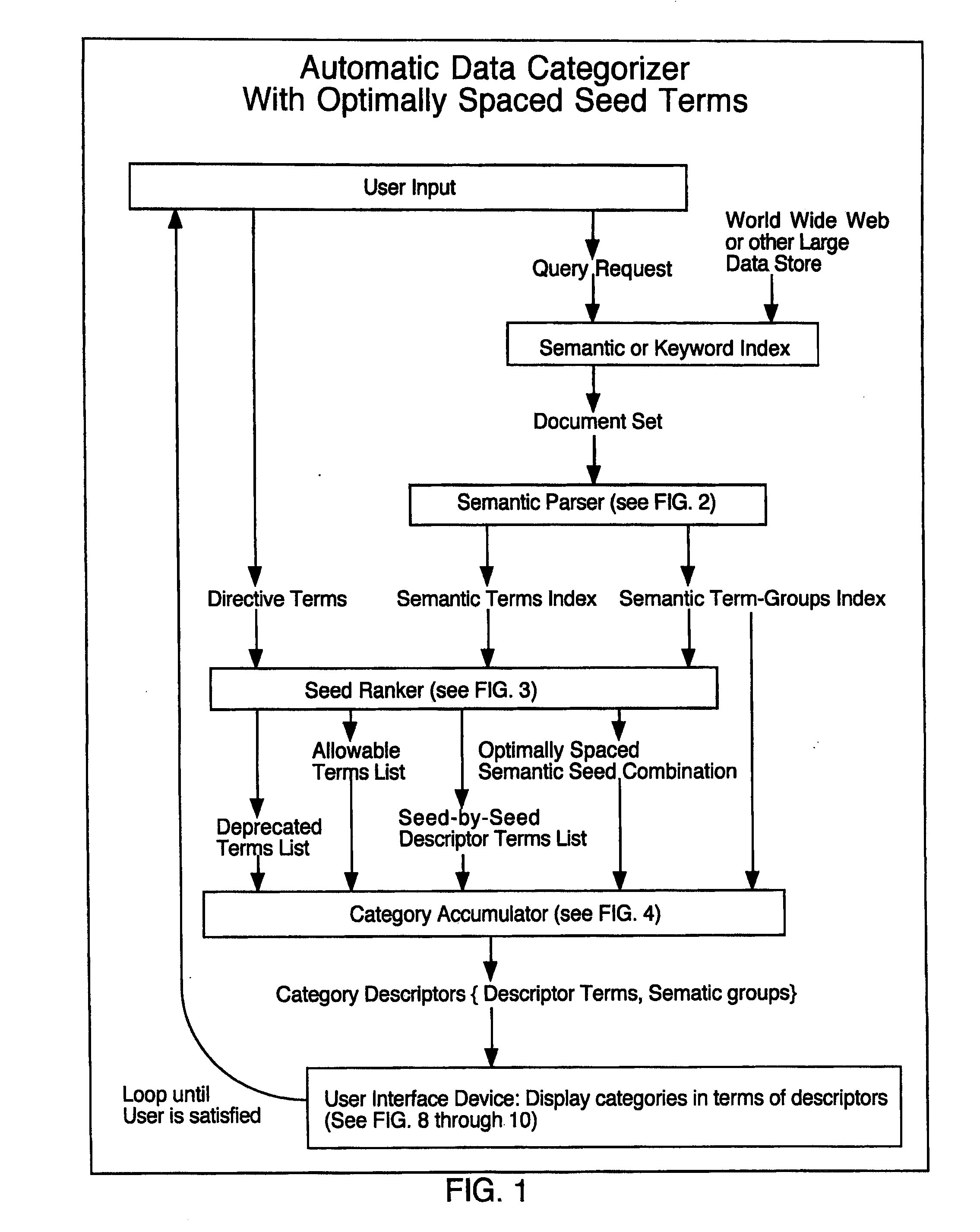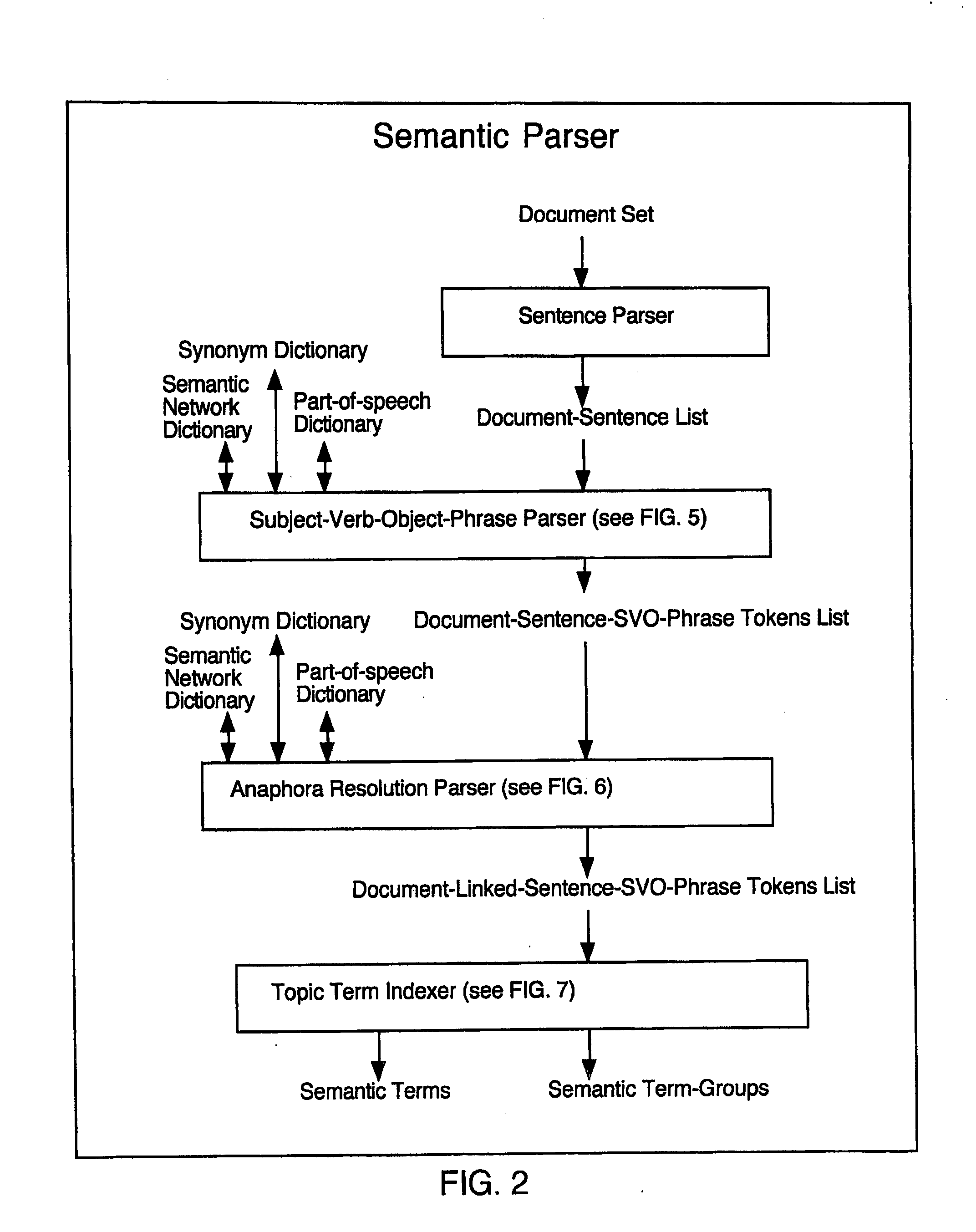[0013] In one embodiment, the present invention balances closeness against obscurity to optimally, or otherwise advantageously, compute spaced semantic seed terms. The computation of optimal semantic seed terms is crucial to the optimal automatic formation of categories. The optimal choice of seed terms make the difference, on the one hand, between pithy easily understood categories which can be used in
natural language conversation and, on the other hand, sloppy verbose categories which resemble gibberish.
[0015] Selection of a representative document set also works well. Most of the
world wide web is searched via keyword based portal returning results sets an insignificant fraction of the total web in size. By taking search query input from a user, a keyword lookup of results for that query can greatly reduce the representative document size. Or, for large query results, only using the summary blurb of three sentences per
web site instead of web documents themselves could be an even greater reduction of representative document size. Of course, it would be more accurate to use a semantic parse of the document data itself, but until a
semantic web index of the entire web is created, a keyword index can suffice to produce a representative document set.
[0016] Another approximation that works well is the segmentation of documents into smaller semantic groups. Sentences, and even subject,
verb and object clauses, can be computed to properly to detect whether two terms co-occur within the same semantic group. For instance, when comparing the terms “
hybrid” and “car,” it is much more significant that “
hybrid ” and “car” occur within the same
sentence than in disjoint sentences of the same document. It is also more significant that they occur adjacent to each other, in the same clause, rather than in separate clauses. By tightly bounding locations where terms can be considered to co-occur, the number of co-occurrences that need to be tracked can thereby be reduced.
[0017] In one embodiment, the present invention computes an optimally spaced semantic seed
list one seed at a time. This careful seed-at-a-time approach yields the highest quality seeds. Since most commercial applications of automatic clustering only need a handful of seeds, this approach makes good economic sense. The semantic seed
list starts empty. To promote relevancy, the first candidate seed may be chosen form the
list of most prevalent terms. The second candidate seed may also be chosen from the list of most prevalent terms. This first candidate pair then drives the computation of the first candidate descriptor list, which are terms co-occurring with one but not both of the terms of the candidate pair. The first candidate pair also drives the computation of the first candidate deprecated terms, which are terms co-occurring with both terms of the candidate pair. The size of the deprecated list measures the closeness of the candidate pair. The size of the descriptor list measures the
prevalence of the candidate pair. The balanced desirability of the candidate pair is the size of the descriptor list divided by the size of the deprecated list.
[0025] A user may also have indicated, either through chat hints, voice conversation, or by clicking on buttons or other input, that a set of specific terms is most desirable for
categorization. These specific terms can be given a higher weight, either directly increasing their balanced desirability numbers, or by removing documents from the representative document set which do not semantically relate to the specific terms, and then reparsing the smaller representative document set and recomputing the optimal semantic seeds while blocking the actual specific terms from the sets of candidate terms. The present invention takes each complete set of optimal semantic seeds as a starting point for collecting lists of related terms and semantic scopes for each seed. The related terms are computed from the most prevalent terms in the descriptor list for the seed, and the usage characteristics are computed from semantic scopes associated with the seed, at whatever level various applications may need, such as web-site or
document level,
paragraph level or even
sentence level. Together the related terms and usage characteristics provide useful output to a variety of applications, such as
search engine portal, search enable chatterbot, dictionary or
encyclopedia browser. The present invention discloses even further uses for succinct categorization, such as automatic augmentation of
semantic network dictionaries using the optimal semantic seeds to define dictionary entries. For instance, prevalent terms found on the web using either a keyword or semantic index to web sites can be automatically analyzed using the automatic categorizer of the present invention, in accordance with one embodiment. A small number of optimal semantic seeds associated with each prevalent term can generate a polysemous set of meanings for that term, one polysemous meaning per optimal semantic seed. From there, the automatic categorizer can be used to categorize the meaning each optimal semantic seed, producing a set of terms to be inherited by the corresponding polysemous meaning. By automatically linking nodes representing each optimal semantic seed to nodes representing categories of meaning for that seed, the full semantic meaning of that seed can be automatically stored in a semantic network dictionary. The full set of optimal semantic seeds for a prevalent term can be automatically added as well, thus automatically completing the meaning of that prevalent term according to current usage across the world-wide web. This method of automatic dictionary construction is the only way lexicography can ever keep up with the explosive growth in semantic meanings generated by the growth of the
world wide web. And, in turn, this automatically augmented dictionary can be used to provide more accurate
parsing of text into smaller semantic groups, for more accurate subsequent automatic categorization.
 Login to View More
Login to View More  Login to View More
Login to View More 


